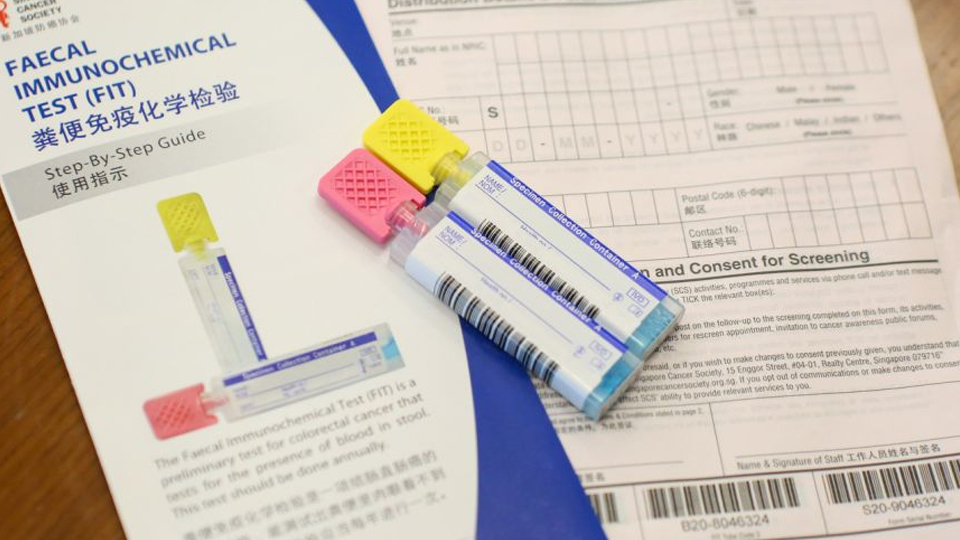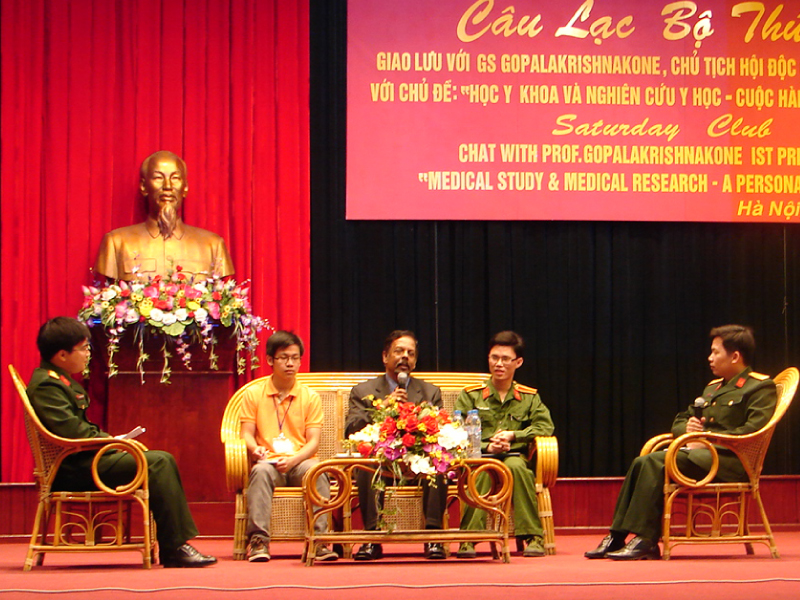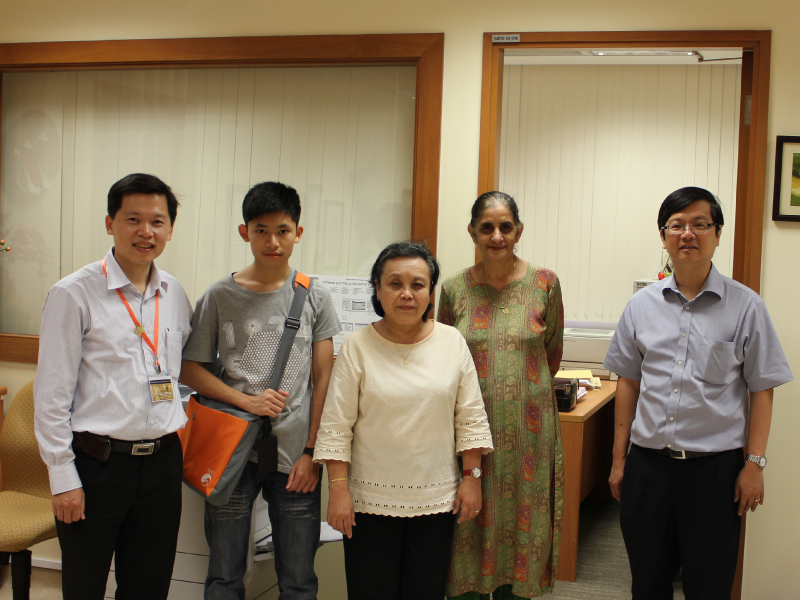North-South Nexus

Dr Le Van Dong (right) with Prof Gopalakrisknone during a visit to NUS with his son in 2013.
By Dr Le Van Dong,
Head, Department of Toxicology & Radiology,
Vietnam Military Medical University
Seventeen years ago, a Vietnamese military doctor arrived to commence postgraduate work at NUS Medicine. Senior Colonel Dr Le Van Dong reflects on his experience.
I graduated from Vietnam Military Medical University (VMMU) as a military doctor in 1995 as the head of Class of 1989-1995. I had always been interested in research work and trained in immunology research.
I realised that as a young and newly graduated bachelor, I needed to master the English language and immunological techniques because those are keys to my future as a researcher and lecturer. I spent most of my energy and salary (it was quite modest then) to study English in the evenings and work on research techniques. At VMMU’s Immunology department I translated an English book on wound healing and wound management into Vietnamese. That effort helped me gain confidence in studying and using English.
My mentor – Professor Pham Manh Hung, Head of the Immunology Department – then became Vice-Minister for Health of Vietnam and established very good international connections with other professors around the world. One of those, Professor John Bradley of Flinders University in South Australia, offered me a short training course at his department in 1998. That six-month visiting fellowship at the Immunology Department at Flinders Medical Center in Adelaide allowed me to learn immunological techniques which I later used for my research at NUS. More importantly, I gained the experience of working in an international academic environment. I believe my exposure in Australia had persuaded the NUS selection panel to award me with a research scholarship.
My supervisor in the Anatomy Department at the NUS Yong Loo Lin School of Medicine was Emeritus Professor P. Gopalakrishnakone, leader of the venom and toxin research programme. There were several PhD and MSc students doing research on snake, spider, scorpion and sea cone snail venoms, which involved venom extraction, toxin purification and characterisation, then gene cloning and recombinant toxin production. It was so exciting. I focused on immunological aspects of snake venoms and the development of an immunoassay kit for venom detection of four common venomous snakes of Vietnam. It was a research study that addressed the needs of my country.
I saw the growth of various sub-disciplines such as genomic and proteomic, as well as the introduction of many powerful technologies such as MALDI-TOF, microarray, biosensor at NUS. I wanted to learn and use many of these tools in my work. I would always be challenged by Prof Gopalakrishnone, who grilled me about the impact of such work. As a student, my answers were always yes (even though sometimes, I wasn’t very confident!). Thanks to his mentoring and encouragement I wrote six chapters in my PhD thesis on different approaches of snake venom research, using three different formats of snake venom detection kit – ELISA, optical immunoassay and snake venom, and antibody microarray.
During my time in Singapore, Prof Gopalakrishnone gave me opportunities to lead by assigning me to leadership responsibilities in the lab.
My PhD work at NUS under his supervision also helped to build the foundations for the future bilateral relationship between VMMU and NUS. Thanks to his efforts, senior leaders of VMMU and the Ministry of Health of Vietnam were able to visit NUS and Singapore on academic missions. My bosses and teachers from VMMU were able to see how I was doing at NUS and they formed linkages that also helped to bring about close working relationships between NUS Medicine and VMMU. As such, when Lieutenant General Professor Nguyen Tien Binh assumed the post of VMMU director, his first trip overseas was to NUS Medicine, to get support for VMMU.
Thanks to the enthusiasm of Prof Gopalakrishnone and the kindness of Professor John Eu-Li Wong and the team at the Yong Loo Lin School of Medicine, we received financial support from Temasek Foundation and Keppel Care Foundation that enabled the collaboration between NUHS and VMMU since 2010. As an NUS Medicine alumnus I was thrilled to be able to help bring about the collaboration between both of my alma mater – NUS Medicine and VMMU.
I end by acknowledging the invaluable contribution of Prof Gopalakrishnone to VMMU, which he first visited in 2000. Subsequently, he visited VMMU every year to give lectures on immunology, toxicology and anatomy. During those lectures, he also demonstrated various teaching techniques such as active teaching and learning, problem-based learning, e-learning and simulation. In addition, he made the effort to talk to students at the English evening club to encourage them to learn English. He has made a lasting impact on all participants, inspired many students and we at VMMU are grateful for his friendship and that of NUS Medicine over the years.

Prof P. Gopalakrishnone speaking at VMMU, 2010.

Dr Le Van Dong (left) and his son posing with former head of department Prof Bay Boon Huat (right) and department staff during a visit to NUS Department of Anatomy, 2013.
